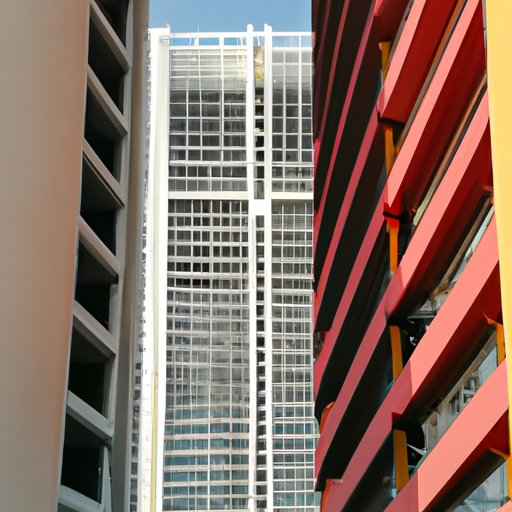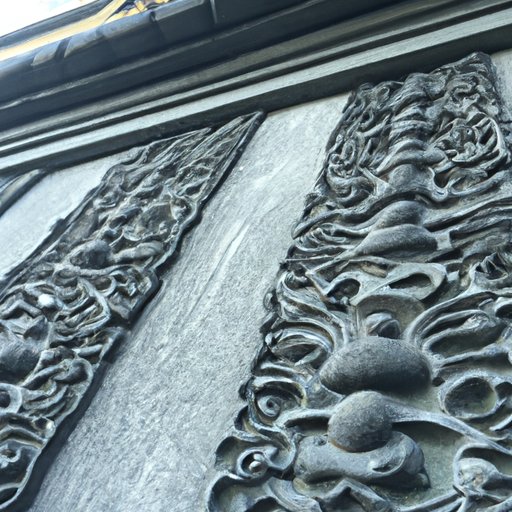Introduction
Describing a building in writing can be an interesting way to explore the structure’s history, design, and cultural significance. It is often used by architects, historians, and writers to capture the essence of a building and to communicate its importance. Through descriptive words and phrases, one is able to convey the building’s character and provide readers with a vivid picture of the structure.
This article will outline the process of describing a building in writing. It will provide tips for surveying the building’s external features, describing the interior layout, comparing the building to other structures, noting historical facts, focusing on unique details, and explaining why the building is important or memorable.
Surveying the Building’s External Features
When describing a building in writing, it is important to first survey the building’s external features. This includes examining the building’s architectural style, noting the type of materials used, and observing any distinguishing characteristics.
Architectural Style
When surveying the building’s external features, it is important to note the architectural style. Is the building Gothic, Renaissance, Baroque, Modern, or something else entirely? Identifying the building’s architectural style will help to provide context and inform the reader about the structure’s design.
Materials Used
It is also important to note the type of materials used to construct the building. Are the walls made of brick, stone, wood, or some other material? Does the building have stained glass windows or ornate doors? These details will help to give the reader a better understanding of the building’s construction and add texture to the description.
Describing the Interior Layout
Once the exterior of the building has been surveyed, it is time to move on to the interior layout. This includes noting any special features or amenities, using sensory language to paint a vivid picture of the space, and providing information about the building’s purpose.
Special Features or Amenities
When describing the interior layout of the building, it is important to note any special features or amenities. Does the building have a grand staircase, an ornate chandelier, or a beautiful mural? These details will help to give the reader a better understanding of the building’s design and provide additional context for the description.
Use of Sensory Language
In addition to noting the special features or amenities, it is also important to use sensory language to paint a vivid picture of the interior space. What are the colors of the walls? How does the light look as it streams through the windows? What do the floors feel like beneath your feet? These details will help to provide the reader with a more immersive experience.

Comparing the Building to Other Structures
When describing a building in writing, it can be helpful to compare the structure to other buildings. This can help to give the reader a sense of scale and provide context for the description.
Giving a Sense of Scale
When comparing the building to other structures, it is important to note the size and scale of the structure. Is the building large or small in comparison to other buildings of the same type? Is it taller or shorter than its neighbors? These details will help to give the reader a sense of the building’s size and provide additional context for the description.
Noting Historical Facts
When describing a building in writing, it can be helpful to note any relevant historical facts. This can include information about the building’s construction, its role in the community, and any significant events that have taken place within the structure.
Relevant to Description
When noting historical facts, it is important to only include information that is relevant to the description. For example, if the building was built in the 18th century, it may be useful to note this fact. However, if the building has no particular historical significance, it may be best to omit this detail.
Focusing on Unique Details
When describing a building in writing, it is important to focus on any unique details that make the structure stand out. This could include distinctive features such as unusual shapes or patterns, decorations such as sculptures or murals, or any personal touches that make the building special.
Distinctive Features
When focusing on unique details, it is important to note any distinctive features that make the building stand out. Are there any unusual shapes or patterns in the architecture? Are there any sculptures or murals that decorate the walls? These details will help to give the reader a better understanding of the building’s design and provide additional context for the description.
Decorations
It is also important to note any decorations that make the building stand out. Are there any paintings or sculptures that adorn the walls? Are there any ornate chandeliers or stained glass windows? These details will help to give the reader a better understanding of the building’s character and provide additional context for the description.
Explaining Why the Building is Important or Memorable
When describing a building in writing, it is important to explain why the building is important or memorable. This could include information about the building’s historical significance, its role in the community, or its personal significance to the writer.
Personal Significance
When explaining why the building is important or memorable, it is important to consider the personal significance of the structure. Does the building have special meaning for the writer? Is the building associated with any fond memories or significant events? These details will help to give the reader a better understanding of the building’s importance and provide additional context for the description.
Conclusion
Describing a building in writing can be an enjoyable task when done correctly. By surveying the building’s external features, describing the interior layout, comparing structures, noting historical facts, focusing on unique details, and explaining why the building is important or memorable, one can capture the essence of the building and provide readers with a vivid picture of the structure.
(Note: Is this article not meeting your expectations? Do you have knowledge or insights to share? Unlock new opportunities and expand your reach by joining our authors team. Click Registration to join us and share your expertise with our readers.)
